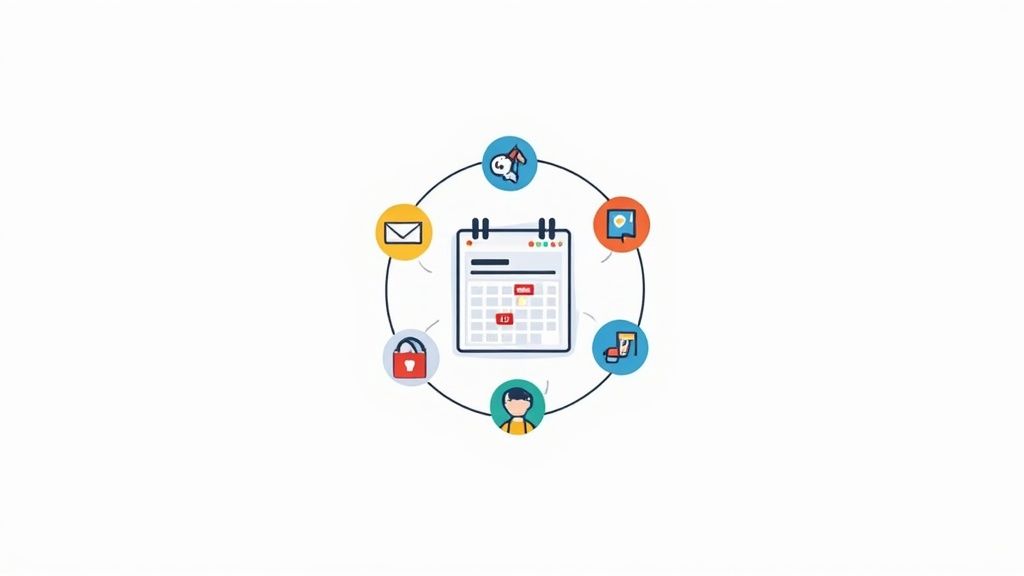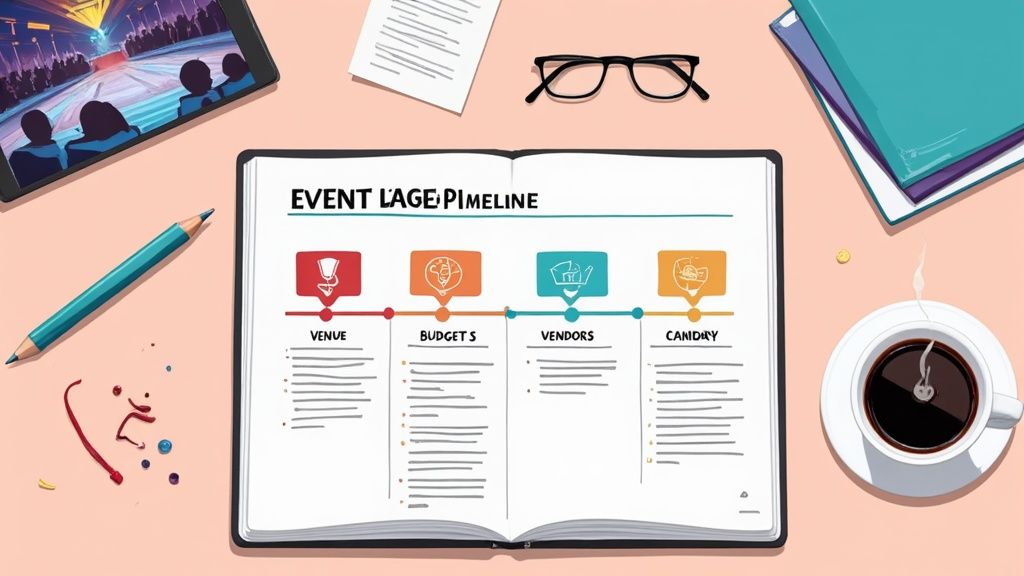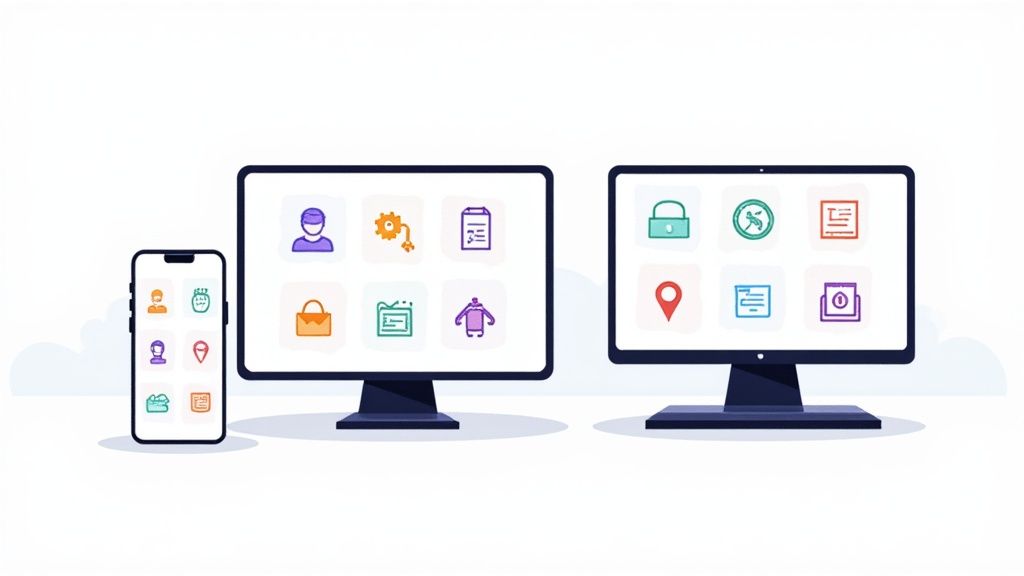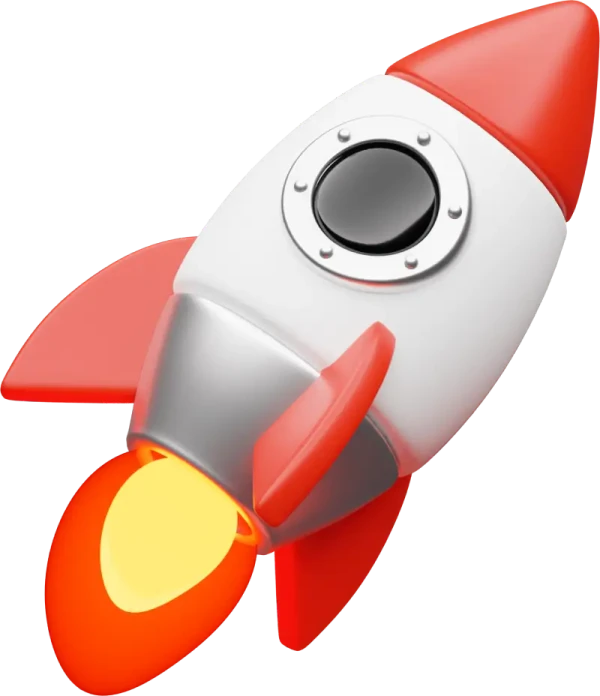In today's crowded marketplace, simply announcing an event isn't enough to fill seats, whether physical or virtual. The difference between a sold-out success and a half-empty room often lies in a dynamic, multi-faceted promotion strategy. Getting your event onto someone's radar is the first step, but securing their attendance requires creativity, persistence, and the right tools.
This comprehensive guide moves beyond generic advice to explore 10 powerful event promotion ideas designed to capture attention, drive registrations, and maximize engagement. You will find actionable steps, real-world examples, and expert insights for strategies ranging from social media contests and influencer partnerships to sophisticated retargeting campaigns and strategic content marketing. We’ll dissect what works and show you how to implement these tactics for your next conference, webinar, or product launch.
A central theme connecting these strategies is the need for seamless integration into your audience's daily schedule. The moment a potential attendee decides they are interested is a critical conversion point. This is where tools like Add to Calendar PRO become more than a simple convenience; they are a vital component of modern event marketing. By bridging the gap between initial interest and firm commitment, an "Add to Calendar" button makes it effortless for your audience to save the date, significantly boosting the likelihood of their attendance. Prepare to transform your promotional efforts from a simple checklist into a strategic growth engine that delivers measurable results.
1. Social Media Contest and Giveaways
Social media contests are one of the most effective event promotion ideas because they transform passive audiences into active participants. These campaigns incentivize sharing and engagement by offering valuable prizes, such as free tickets, VIP upgrades, or exclusive merchandise, in exchange for user actions like following, tagging friends, or sharing a post. This strategy capitalizes on the power of social proof and network effects, turning your audience into a volunteer marketing force.
A well-executed contest doesn't just generate buzz; it creates a vibrant community around your event. It leverages user-generated content (UGC), which is often perceived as more authentic and trustworthy than branded advertising. When potential attendees see their peers excited about your event, it significantly boosts their interest and desire to participate.
How to Implement a Successful Contest
To maximize impact, structure your giveaway with clear goals and simple rules. The easier it is for people to enter, the higher your participation rates will be.
- Set Clear, Simple Rules: Define exactly what users must do to enter. For example, "Follow our page, like this post, and tag two friends you'd bring to the event." Avoid complicated multi-step processes that can deter participation.
- Use an Event-Specific Hashtag: Create a unique hashtag (e.g., #TechSummit2024Giveaway) to track entries and consolidate all UGC in one place. This also boosts your event's overall visibility.
- Offer Compelling Prizes: The prize must be highly desirable to your target audience. While event tickets are a classic choice, consider offering a full VIP experience, a meet-and-greet with a speaker, or a valuable product from a sponsor.
- Promote Across Platforms: Announce your contest on all your social media channels, in your email newsletter, and on your website's event page. Ensure the call-to-action is prominent.
Pro-Tip: After announcing the winner, direct all participants to your ticketing page with a limited-time "thank you" discount. This gesture can convert engaged non-winners into ticket buyers.
By turning promotion into an interactive game, you not only amplify your reach but also build a powerful sense of community and anticipation long before the event begins.
2. Influencer and Ambassador Partnerships
Strategic collaborations with influencers and ambassadors are powerful event promotion ideas that leverage third-party credibility to reach new, highly targeted audiences. This approach involves partnering with industry experts or popular social media figures who promote your event to their established followers. The core benefit comes from the trust and authenticity these individuals have cultivated, making their endorsement more persuasive than traditional advertising.
When an influencer like a top YouTube creator at VidCon or a leading designer for Adobe MAX shares their excitement, it serves as a powerful social signal. Their followers, who trust their judgment, are more likely to view the event as a must-attend experience. This method effectively outsources audience-building by tapping into pre-existing, engaged communities.
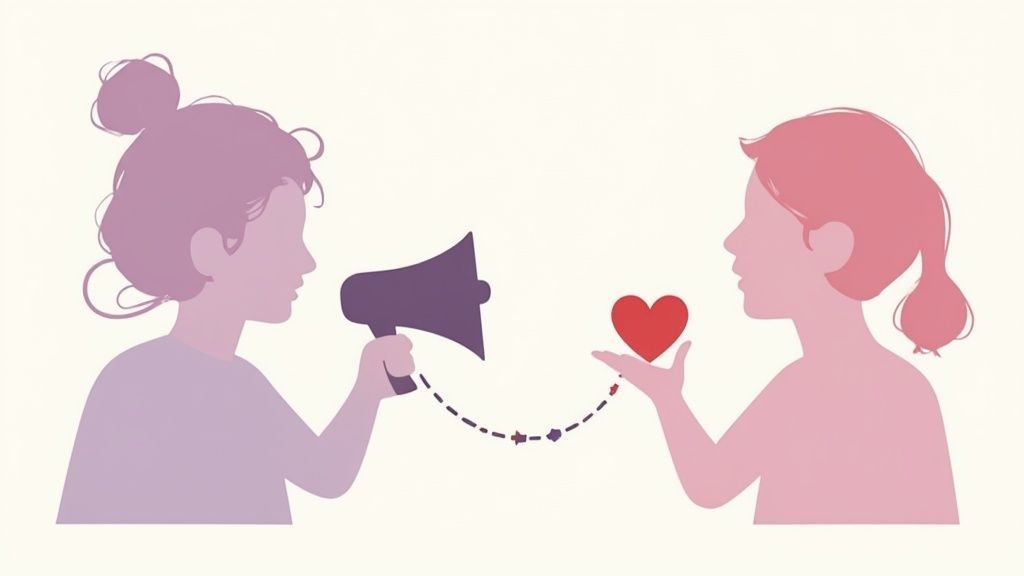
How to Implement a Successful Partnership
A successful influencer campaign requires more than just finding someone with a large following; it's about strategic alignment and clear communication.
- Choose the Right Partners: Vet potential influencers thoroughly to ensure their audience demographic and brand values align with your event. A mismatch can undermine credibility.
- Provide Creative Freedom: While brand guidelines are important, allow influencers the creative freedom to promote the event in their authentic voice. Their audience follows them for their unique style, not for scripted ads.
- Use Unique Tracking Links and Codes: Assign each influencer a unique promo code or affiliate link. This allows you to accurately measure the ROI of each partnership and identify your top-performing ambassadors.
- Build Long-Term Relationships: Think beyond a single event. Nurturing long-term relationships can turn influencers into genuine brand ambassadors who provide ongoing value. To maximize your reach and authenticity, explore strategies for influencer outreach. Learn more about how to effectively collaborate with influencers to boost your event's visibility.
Pro-Tip: Instead of a one-time payment, consider a performance-based model where influencers earn a commission on each ticket sold through their unique link. This motivates them to drive tangible results and directly ties your marketing spend to revenue.
By leveraging the sway of trusted voices, you can cut through the noise, build authentic buzz, and drive significant ticket sales from audiences you might not otherwise reach.
3. Email Marketing Campaigns
Email marketing remains one of the most powerful and direct event promotion ideas because it allows you to nurture leads and communicate directly with a captive audience. Unlike social media, where algorithms dictate visibility, email lands directly in your subscribers' inboxes, providing a dedicated channel for building anticipation, sharing exclusive content, and driving registrations through strategic, personalized messaging. This approach fosters a direct line of communication throughout the entire event lifecycle.
A well-crafted email sequence, like those used by HubSpot for its INBOUND conference, does more than just sell tickets; it builds a relationship. By delivering value through speaker announcements, behind-the-scenes content, and early-bird offers, you transform a simple promotional blast into a must-read newsletter, keeping your event top-of-mind and significantly increasing the likelihood of conversion.
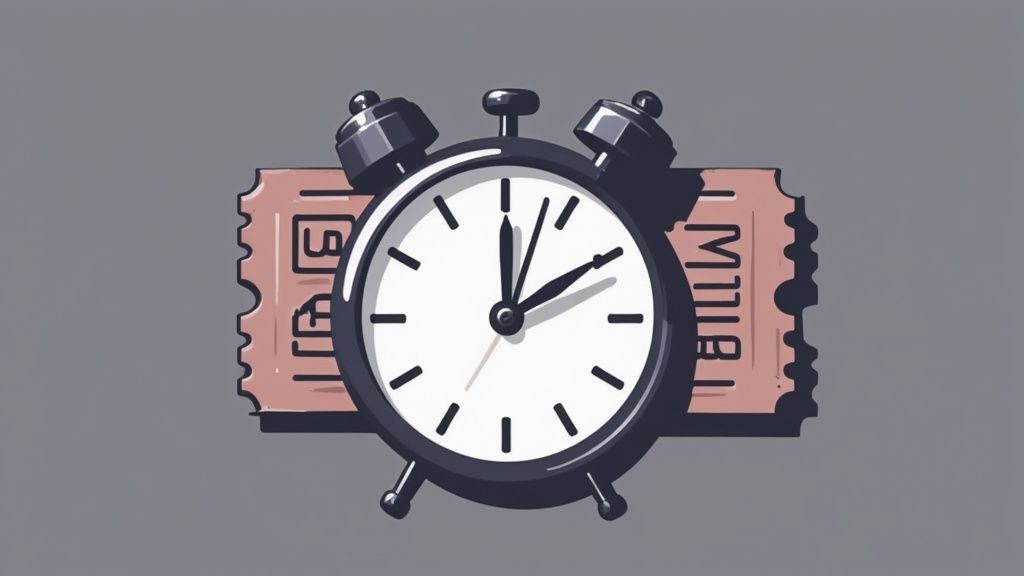
How to Implement a Successful Email Campaign
To turn your email list into your biggest source of attendees, you need a strategic approach that focuses on value, segmentation, and clear calls-to-action.
- Segment Your Audience: Don't send the same message to everyone. Segment your list based on past attendance, interests, or engagement level (e.g., opened previous emails but didn't click). This allows you to tailor your messaging for maximum relevance and impact.
- Craft Compelling Subject Lines: Your subject line is the gatekeeper. Use a mix of curiosity, urgency ("Early bird pricing ends Friday!"), and exclusivity ("A special offer for our past attendees") to dramatically improve your open rates.
- Provide Value Beyond the Pitch: Your emails should offer more than just a "buy now" button. Share valuable content like speaker interviews, industry insights related to your event's theme, or helpful tips for attendees.
- Include a Clear Call-to-Action (CTA): Every email should guide the reader toward a specific action. Use prominent, action-oriented buttons like "Register Now," "Get Your Early Bird Ticket," or "View the Agenda."
Pro-Tip: Embed an "Add to Calendar" button directly within your registration confirmation and reminder emails. This simple action significantly reduces no-shows by placing your event directly onto your attendees' personal schedules. You can explore how to generate email links that actually work for more on this.
By treating your email list as a community rather than a sales channel, you can create a highly effective promotional engine that drives both ticket sales and long-term loyalty.
4. Content Marketing and Blogging
Content marketing is a powerful long-term strategy among event promotion ideas that involves creating and sharing valuable, relevant content to attract and engage a target audience. Instead of directly selling tickets, this approach builds authority, establishes trust, and nurtures potential attendees by providing useful information, answering their questions, and solving their problems. By becoming a go-to resource, you keep your event top-of-mind.
This method transforms your promotional efforts from a simple announcement into an ongoing conversation. For example, a tech conference can publish articles about emerging industry trends, while a music festival might create artist interview series. This content not only attracts organic traffic through search engines but also provides shareable material for social media, positioning your event as a thought leader.
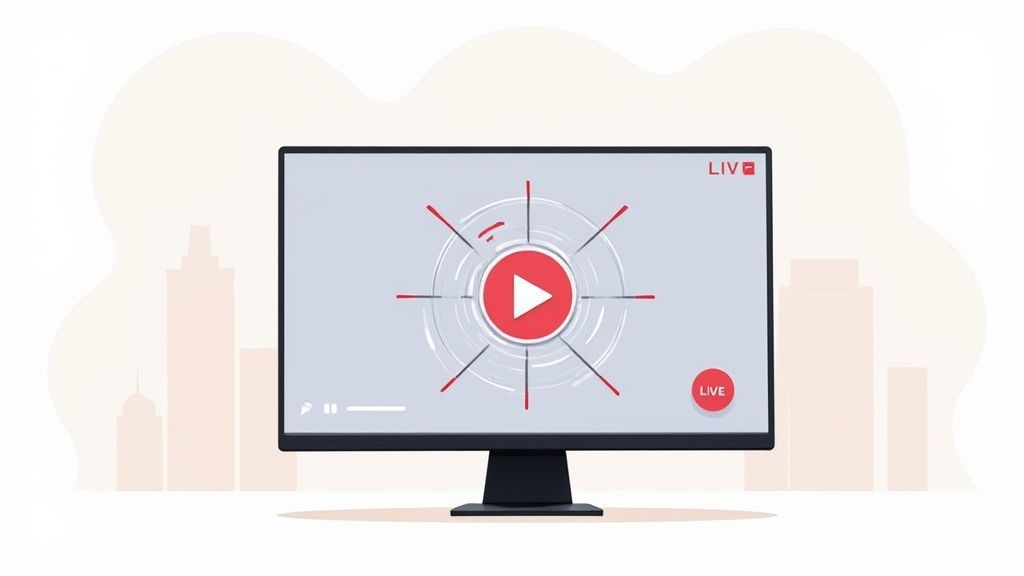
How to Implement a Successful Content Strategy
A successful content marketing plan requires a deep understanding of your audience and a commitment to consistency. The goal is to provide value that naturally leads to interest in your event.
- Solve Audience Pain Points: Create content that directly addresses the challenges and interests of your target attendees. This could include how-to guides, industry trend reports, or case studies relevant to your event's theme.
- Collaborate with Speakers: Leverage the expertise and networks of your event speakers by inviting them to contribute guest blog posts, participate in Q&A articles, or co-host webinars. Their involvement adds credibility and extends your promotional reach.
- Create an Event-Aligned Calendar: Plan your content releases around your event timeline. Start with broad, top-of-funnel topics months in advance and narrow your focus to event-specific details, like session previews and speaker spotlights, as the date approaches.
- Repurpose Content for Multiple Channels: Maximize your efforts by repurposing a single piece of content. A detailed blog post can be transformed into a series of social media updates, an infographic, a video script, or a segment in your email newsletter.
Pro-Tip: Embed calls-to-action (CTAs) within your content that lead directly to your event registration page. Frame the event as the ultimate solution or next step to the topic discussed in your blog post.
5. Early Bird and Limited-Time Offers
Early bird offers are a powerful event promotion idea because they leverage psychological principles like urgency and scarcity to drive immediate action. This strategy rewards proactive attendees with discounted tickets or exclusive perks for committing early, creating a strong initial sales momentum that builds social proof and financial stability for your event. It effectively turns the natural human tendency to avoid loss into a powerful sales driver.
By creating distinct pricing tiers, you not only incentivize early registration but also signal value. When potential attendees see that the price will increase, it frames the current offer as a valuable, fleeting opportunity. This approach, popularized by direct response marketing experts, is fundamental for generating early cash flow, which is crucial for covering upfront event costs and gauging audience interest accurately from the start.
How to Implement a Successful Offer
A well-structured early bird campaign relies on clear communication and firm deadlines to maintain credibility and maximize urgency.
- Create Multiple Pricing Tiers: Structure your sales timeline with several pricing levels, such as "Super Early Bird," "Early Bird," and "General Admission." Clearly communicate the price increases and deadlines, like the tiered ticket releases for festivals like Burning Man or progressive pricing at TEDx events.
- Use Visual Countdown Timers: Embed a countdown timer directly on your event registration page and in your promotional emails. This visual cue constantly reminds potential buyers of the approaching deadline, making the urgency tangible.
- Clearly Define the Value: Don't just offer a discount; articulate what the early bird package includes. This could be preferred seating, an exclusive Q&A session, or a special welcome gift, making the offer more compelling than just a lower price.
- Communicate Deadlines Consistently: Send reminder emails as each pricing deadline approaches. Create a sense of finality by announcing "Last Chance!" or "24 Hours Left!" to trigger last-minute decisions.
Pro-Tip: Combine your early bird offer with another promotion. For example, offer the first 100 early bird registrants an additional perk, such as a free piece of merchandise or a complimentary drink voucher, to add another layer of scarcity and drive even faster sign-ups.
By rewarding early commitment, you not only secure initial revenue but also build a foundational audience that generates buzz and attracts more attendees as your event date nears.
6. Partnerships with Relevant Organizations
Strategic partnerships are powerful event promotion ideas that allow you to tap into pre-existing, engaged communities. By collaborating with industry associations, complementary businesses, or community groups, you can amplify your message and lend your event third-party credibility. This approach moves beyond traditional advertising by leveraging the trust and relationships these organizations have already built with their audiences.
A successful partnership is mutually beneficial. You gain access to a new, relevant audience, while your partner offers their members valuable content, a special discount, or association with a key industry event. Think of it as a trusted referral. When a respected organization like a medical association promotes a healthcare conference to its members, the endorsement carries far more weight than a standard ad, boosting both registrations and perceived value.
How to Implement a Successful Partnership
Building a strong alliance requires a clear strategy and a focus on reciprocal value. It’s about finding the right fit and creating a win-win scenario.
- Identify Synergistic Partners: Look for organizations whose audience aligns with your target demographic but doesn't directly compete. For a startup conference, this could be venture capital firms, accelerators, or university entrepreneurship clubs.
- Establish Clear Terms: Define expectations upfront in a simple agreement. Outline what each party will provide, such as newsletter mentions, social media posts, or logo placement. Co-branded promotional materials and dedicated sections on your event landing page can solidify the partnership. Find inspiration by looking at some top-tier event landing page examples.
- Create Co-Branded Materials: Develop assets like social media graphics, email templates, and flyers that feature both logos. This visually reinforces the partnership and makes it easy for your partner to promote the event.
- Track Performance: Provide each partner with a unique URL or promo code to track the registrations they generate. This demonstrates their ROI and helps you identify your most valuable partners for future events.
Pro-Tip: Offer your key partners a block of discounted tickets or a unique affiliate code. This incentivizes them to actively promote your event, as they share directly in the success they help create.
By aligning with established organizations, you not only expand your reach but also enhance your event's authority and appeal, driving higher-quality attendance.
7. Video Marketing and Live Streaming
Video marketing is a powerful event promotion idea that captures attention and conveys your event's atmosphere in a way static text and images cannot. This strategy involves creating dynamic visual content, from polished promotional trailers and behind-the-scenes glimpses to speaker interviews and live streams. By showcasing the value and energy of your event, video forges a strong emotional connection with potential attendees, making them feel the excitement before they even arrive.
This multimedia approach capitalizes on video's high engagement rates and immense shareability across social platforms. A well-crafted video can communicate key information, build anticipation, and demonstrate the unique experience you offer. Whether it's a pre-recorded teaser or a live Q&A session with a keynote speaker, video content transforms passive viewers into an engaged, invested audience.
How to Implement a Successful Video Strategy
A successful video campaign requires planning and a clear understanding of your audience and platforms. The goal is to create compelling content that viewers want to watch and share.
- Create Short, Engaging Teasers: Produce short, high-impact videos (15-60 seconds) optimized for social media feeds. Use these to announce speakers, reveal agenda highlights, or showcase exciting moments from past events.
- Invest in Quality Audio: Clear, crisp audio is often more critical than perfect video quality. Viewers will forgive slightly shaky visuals, but poor sound can make your content unwatchable.
- Leverage Live Streaming: Host live Q&A sessions with organizers or speakers, stream exclusive behind-the-scenes content, or broadcast a portion of a previous event to give your audience a taste of the real experience.
- Embrace User-Generated Content: Beyond your own productions, encourage past attendees to share their experiences. Leveraging authentic user-generated videos from your audience can significantly amplify your event's reach and trustworthiness.
Pro-Tip: Add captions to all your videos. Not only does this improve accessibility for the hearing impaired, but it also caters to the large majority of social media users who watch videos with the sound off.
By integrating a diverse video strategy, you create multiple touchpoints to attract and convert attendees, turning your event promotion into a must-watch experience.
8. Referral and Affiliate Programs
Referral and affiliate programs are powerful event promotion ideas that transform your existing audience into a dedicated sales force. This strategy incentivizes your attendees, partners, and professional marketers to promote your event by offering a reward, typically a commission or discount, for every new ticket sold through their unique referral link. It's a performance-based model that taps into the most trusted form of marketing: a personal recommendation.
By leveraging the networks of your loyal supporters, you create an authentic and scalable promotion channel. When a friend or trusted industry peer recommends an event, the endorsement carries significant weight, often proving more effective than traditional advertising. This word-of-mouth amplification can dramatically expand your reach to new, highly-qualified audiences who might otherwise be difficult to access.
How to Implement a Successful Program
A well-structured program is essential for motivating participants and ensuring a positive return on investment. The key is to make it easy to share and rewarding for both the referrer and the new attendee.
- Offer Compelling Incentives: The reward must be motivating. Common options include a percentage-based commission on ticket sales (e.g., 10-20%), a flat fee per referral, free tickets, or exclusive VIP upgrades.
- Provide a Marketing Toolkit: Equip your affiliates with everything they need to succeed. This includes pre-written email copy, social media graphics, key event talking points, and their unique tracking link. This ensures brand consistency and lowers the barrier to entry.
- Set Clear Terms and Conditions: Define the rules of engagement from the start. Outline commission structures, payment schedules, and any restrictions to prevent confusion or abuse of the program.
- Track Performance and Communicate: Use a reliable platform to track referrals and sales accurately. Keep your affiliates engaged by sending regular updates on their performance, announcing new promotional materials, and sharing event news.
Pro-Tip: Consider a tiered incentive structure. For example, offer a 10% commission for the first five sales, which increases to 15% after that. This gamifies the process and encourages top performers to sell even more.
By creating a mutually beneficial partnership, a referral program not only drives ticket sales but also builds a loyal community of advocates invested in your event's success.
9. Public Relations and Media Outreach
Public relations is one of the most powerful event promotion ideas for building credibility and reaching audiences beyond your direct marketing channels. Unlike paid advertising, PR focuses on generating "earned media" through strategic storytelling, securing editorial coverage from journalists, bloggers, and industry publications. This approach leverages third-party validation, which is often seen as more trustworthy and influential than a direct sales pitch.
Effective PR isn't just about sending out a press release. It's about crafting a newsworthy angle that makes your event compelling to a media outlet's audience. When a respected publication like Forbes covers your business conference or a popular tech blog features your innovative webinar, it lends your event an invaluable stamp of authority and significantly broadens your promotional reach.
How to Implement a Successful PR Campaign
A successful PR strategy requires careful planning, relationship-building, and a compelling story that goes beyond a simple event announcement.
- Develop Newsworthy Angles: Don't just announce your event; create a story. Are you releasing exclusive industry research? Is your keynote speaker a controversial or groundbreaking figure? Focus on what makes your event unique and relevant to current trends.
- Build Media Relationships: Don't wait until you need coverage to connect with journalists. Follow them on social media, engage with their work, and offer yourself as a source for other stories. A warm introduction is far more effective than a cold email.
- Create a Professional Press Kit: Prepare a comprehensive media kit that includes a well-written press release, high-resolution photos of speakers and the venue, company logos, and contact information. Make it easy for journalists to access everything they need.
- Track and Leverage Coverage: Monitor all media mentions of your event. Share positive articles and reviews on your social media channels, in your email newsletters, and on your website to amplify their impact and build social proof.
Pro-Tip: Target niche bloggers and micro-influencers in your industry. They often have highly engaged, specific audiences and may be more open to covering emerging events than larger, more established media outlets.
Integrating a solid PR strategy is a critical component of a holistic promotional effort. To see how this fits into a larger strategy, you can explore our guide to building a comprehensive event marketing plan on add-to-calendar-pro.com.
10. Retargeting and Paid Advertising
Retargeting is a sophisticated event promotion idea that reconnects with potential attendees who have shown interest but haven't yet converted. It uses tracking pixels to serve targeted ads to users who have previously visited your event website, landing page, or social media profile, reminding them to complete their registration. This powerful strategy keeps your event top-of-mind and significantly boosts conversion rates by focusing on a warm, pre-qualified audience.
When combined with broader paid advertising campaigns on platforms like Google, Facebook, and LinkedIn, you can both re-engage interested visitors and reach new, highly specific audience segments. Paid ads allow you to target users based on demographics, interests, job titles, and online behaviors, ensuring your promotional budget is spent efficiently on reaching people most likely to attend. This dual approach maximizes your marketing ROI by nurturing leads and driving new discoveries simultaneously.
How to Implement a Successful Ad Campaign
To get the most out of your ad spend, you need a structured approach that combines precise targeting with compelling creative and continuous optimization.
- Install Tracking Pixels: Before running any ads, install the Meta Pixel (for Facebook and Instagram) and the Google Ads tag on your event website and ticket purchasing pages. This is essential for tracking conversions and building retargeting audiences.
- Segment Your Audiences: Create separate campaigns for different audience groups. For example, one campaign for retargeting website visitors, another for targeting a lookalike audience based on past attendees, and a third for targeting users by professional interest on LinkedIn.
- Craft Compelling Ad Copy and Visuals: Your ads must grab attention and convey value instantly. Use high-quality images or short videos from past events. Your copy should have a clear call-to-action (CTA), such as "Register Now," "Get Your Early Bird Ticket," or "Learn More."
- Monitor and Optimize Relentlessly: Advertising is not a "set it and forget it" activity. Continuously monitor your campaign performance, A/B test different ad creatives and headlines, and reallocate your budget to the best-performing ads and audiences to maximize results.
Pro-Tip: Create a specific retargeting campaign for users who abandoned the ticket checkout process. Serve them an ad with a special, limited-time discount code to overcome their hesitation and encourage them to complete the purchase.
Event Promotion Strategies Comparison
| Strategy | Implementation Complexity 🔄 | Resource Requirements ⚡ | Expected Outcomes 📊 | Ideal Use Cases 💡 | Key Advantages ⭐ |
|---|---|---|---|---|---|
| Social Media Contest and Giveaways | Medium - Requires ongoing moderation and monitoring | Moderate - Social media tools and prize budget | High engagement and viral reach | Audience engagement, brand awareness | Expands reach exponentially, cost-effective, authentic content generation |
| Influencer and Ambassador Partnerships | High - Coordination and vetting of influencers | High - Compensation and content collaboration | Strong credibility and targeted audience | Brand trust building, targeted promotions | Access to engaged audiences, authentic endorsements, measurable ROI |
| Email Marketing Campaigns | Medium - List segmentation and automation setup | Low to Moderate - Email marketing platform | Direct communication, high ROI | Lead nurturing, event reminders | Personalized messaging, cost-effective, detailed analytics |
| Content Marketing and Blogging | High - Consistent content creation and SEO effort | High - Skilled content creators, SEO expertise | Long-term organic traffic and brand authority | Thought leadership, SEO-driven audience building | Builds credibility, improves SEO, generates shareable content |
| Early Bird and Limited-Time Offers | Low to Medium - Pricing setup and deadline management | Low - Pricing strategy and website tools | Accelerated sales and early revenue | Driving urgent ticket sales, demand forecasting | Creates urgency, rewards early buyers, generates buzz |
| Partnerships with Relevant Organizations | Medium - Partner identification and relationship management | Moderate - Collaborative marketing efforts | Expanded audience reach and shared resources | Cross-promotion, cost-sharing | Cost-effective, leverages partner trust, creates networking opportunities |
| Video Marketing and Live Streaming | High - Production, editing, and live streaming setup | High - Equipment and production expertise | High engagement and emotional connection | Demonstrating event atmosphere, global outreach | Strong storytelling, shareability, real-time engagement |
| Referral and Affiliate Programs | Medium to High - Tracking and payment systems required | Moderate - Platform and incentive costs | Scalable promotion with performance-based results | Word-of-mouth amplification, scalable growth | Performance-based cost, personal trust leverage, detailed tracking |
| Public Relations and Media Outreach | High - Relationship building and content creation | Moderate - PR expertise and media asset prep | High credibility and earned media coverage | Brand reputation, broad audience reach | Third-party validation, cost-effective, long-term brand building |
| Retargeting and Paid Advertising | High - Advanced tracking and ongoing optimization | High - Ad spend and management resources | Increased conversion rates and precise targeting | Conversion maximization, audience re-engagement | Precise targeting, scalable budgets, detailed performance insights |
From Ideas to Action: The Future of Your Events
We have explored a comprehensive landscape of modern event promotion ideas, from the viral potential of social media contests to the targeted precision of retargeting ads. The journey from a great event concept to a packed virtual or physical venue is paved with strategic, creative, and persistent effort. The ten strategies discussed, including influencer collaborations, compelling content marketing, and strategic media outreach, are not isolated tactics. Instead, they form a powerful, interconnected ecosystem designed to capture attention and drive registration in a crowded digital world.
The core challenge, however, remains consistent across all these methods: how do you convert fleeting interest into a firm commitment? A potential attendee might see your influencer's post, read your blog, or click on your ad, but the moment is lost if they don't immediately secure the event in their personal schedule. This is the critical final step where most promotional funnels break down.
The Unifying Thread: Reducing Friction, Maximizing Commitment
The most successful event promotion campaigns share a common, powerful characteristic: they are seamless. They remove every possible barrier between discovery and attendance. Think about the journey:
- Discovery: A user sees your early bird offer on LinkedIn.
- Interest: They click through to a landing page.
- Action: They decide to attend.
- Commitment: This is the key. Is the next step a clunky form followed by a generic confirmation email that gets lost in their inbox? Or is it a single, satisfying click that instantly adds your event to their Google Calendar, Outlook, or Apple Calendar?
This final, crucial step is what separates a "maybe" from a "definitely." Every idea we've covered, from video marketing to referral programs, ultimately leads to this pivotal moment of conversion. The easier you make it for someone to save the date, the more likely they are to show up.
Actionable Takeaways for Your Next Campaign
As you move from planning to execution, keep these overarching principles at the forefront of your strategy. True event marketing mastery isn't just about having great ideas; it's about flawlessly executing them.
- Integrate, Don't Isolate: Your promotion should not feel like a series of disconnected efforts. Your email campaign should echo the messaging of your social media giveaway. The content on your blog should support the value proposition highlighted in your paid ads. Create a cohesive narrative that reinforces your event's importance at every touchpoint.
- Focus on the User Journey: Map out the path your ideal attendee takes from first hearing about your event to the moment they log in or walk through the door. Identify potential drop-off points. Is your registration form too long? Is the "Add to Calendar" link buried in an email? Streamline this journey relentlessly.
- Make Commitment Effortless: This is the most critical takeaway. The ultimate goal of all your creative event promotion ideas is to secure a spot on your audience's personal calendar. This simple action transforms a passive prospect into an active, committed attendee who will receive native calendar reminders, solidifying their intent to participate.
Mastering these concepts will elevate your events from well-promoted to unmissable. It's about building a promotional engine where every part works in harmony, guiding your audience smoothly toward one simple, powerful action: adding your event to their calendar. This isn't just about boosting attendance numbers; it's about respecting your audience's time and making it incredibly easy for them to say "yes." The future of your events depends not just on the brilliance of your ideas, but on the simplicity of the path to participation.
Ready to turn your promotional efforts into confirmed attendees? Add to Calendar PRO bridges the gap between interest and commitment by making it effortless for users to add your events directly to their calendars. Implement our powerful tools today and ensure your brilliant event promotion ideas translate into a full house.
